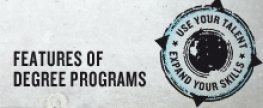
Apply
now
now
Human-Computer Interaction (elective)
level of course unit
English version available soonLearning outcomes of course unit
Graduates know the basics of designing web-based or mobile interaction interfaces and are able to apply them independently in the context of interactive systems. In this context, gradu-ates acquire knowledge of the basic concepts of the work and research field of human-computer interaction: Usability, user experience and user interface design. Graduates acquire the basic knowledge to design interactive applications according to a human-centred design process and to analyze and evaluate user interfaces with usability evaluation methods.
prerequisites and co-requisites
none
course contents
The lecture teaches basic concepts from the field of human-computer interaction (usability, user experience, user interface design) and information visualization. This includes the follow-ing focal points: User interface architectures; design criteria, guidelines and standards for the creation and modelling of user interfaces of interactive systems; approaches and methods (quantitative and qualitative) for the evaluation of user interfaces of interactive systems; web style guides and evaluation criteria for websites (e.g. with regard to accessibility); basics of information presentation and data visualization; interactive information visualization;
the theoretical lecture contents are prepared in the exercise using practical examples and implemented in a small project (usability evaluation) in a team.
the theoretical lecture contents are prepared in the exercise using practical examples and implemented in a small project (usability evaluation) in a team.
recommended or required reading
- A. Dix, J. Finlay, G.D. Abowd, R. Beale: Human-Computer Interaction.Third Edition, Prentice Hall 2003, ISBN 978-0130461094
- Cooper, Reimann, and Cronin; About Face 3: The Essentials of Interaction Design; Wiley, 2007. ISBN 0470084111
- Lazar, Feng, and Hochheiser; Research Methods in Human-Computer Interaction; Wiley, 2010. ISBN 0470723378
- Stone, Jarrett, Woodruffe, and Minocha; User Interface Design and Evaluation; Morgan Kaufmann, March 2005. ISBN 0120884364
- A. Kerren, A. Ebert, J. Meyer: Human-Centered Visualization Environments.Springer 2007, ISBN 978-3540719489
- Sarodnick, F., & Brau, H.: Methoden der Usability-Evaluation. Bern: Hans Huber, 2011.
- Shneiderman, B., & Plaisant, C.: Designing the user interface (5th ed.). Boston: Addison-Wesley, 2009.
- Nielsen, Jakob: Designing Web Usability, dtsch. Ausg., Markt und Technik, 2004
- Cooper, Reimann, and Cronin; About Face 3: The Essentials of Interaction Design; Wiley, 2007. ISBN 0470084111
- Lazar, Feng, and Hochheiser; Research Methods in Human-Computer Interaction; Wiley, 2010. ISBN 0470723378
- Stone, Jarrett, Woodruffe, and Minocha; User Interface Design and Evaluation; Morgan Kaufmann, March 2005. ISBN 0120884364
- A. Kerren, A. Ebert, J. Meyer: Human-Centered Visualization Environments.Springer 2007, ISBN 978-3540719489
- Sarodnick, F., & Brau, H.: Methoden der Usability-Evaluation. Bern: Hans Huber, 2011.
- Shneiderman, B., & Plaisant, C.: Designing the user interface (5th ed.). Boston: Addison-Wesley, 2009.
- Nielsen, Jakob: Designing Web Usability, dtsch. Ausg., Markt und Technik, 2004
assessment methods and criteria
Written exam or seminar thesis
language of instruction
Germannumber of ECTS credits allocated
4eLearning quota in percent
15course-hours-per-week (chw)
2planned learning activities and teaching methods
Lecture, group work (project), presentation and discussion of tasks






